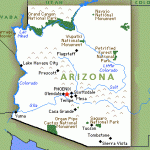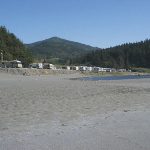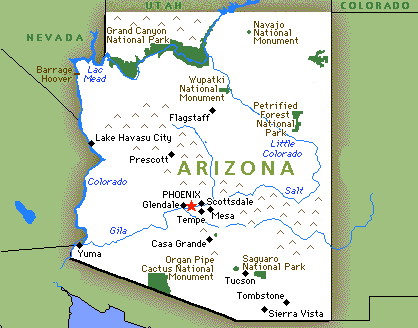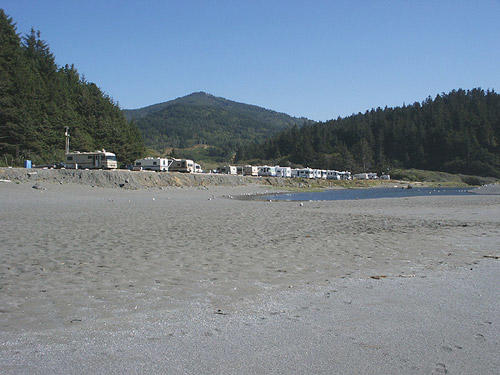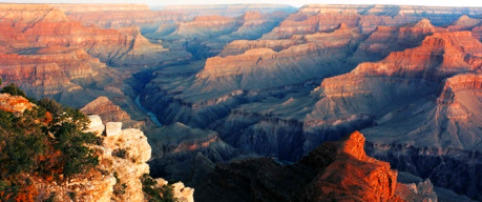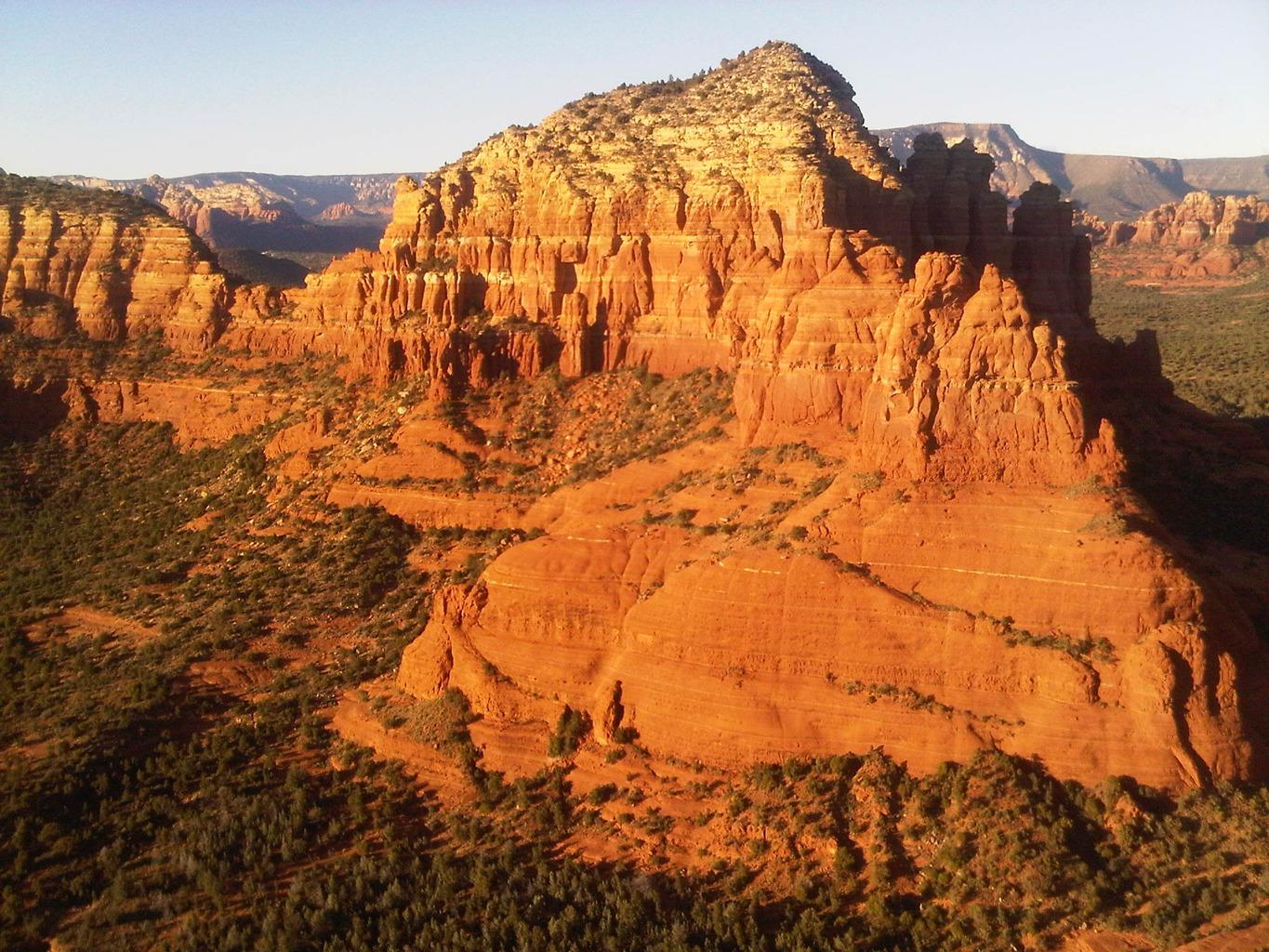Gila City became Arizona’s first boomtown in 1858, but by the mid-1860s, it was already a ghost town. Jacob Snively discovered gold there in 1857, and in less than a year, more than 1,000 independent Anglo and ethnic Mexican prospectors were earning $50 a day from veins in the area. Just a few years later, in 1862, an even bigger placer strike gave rise to the town of Yuma. Many of the Sonoran miners who first settled Yuma during the 1860s were returnees from California’s gold fields. After hearing of the California gold rush, more than
10,000 Sonorans passed through Arizona on their way to northern California. Some returned seasonally to Sonora throughout the 1850s to plant and harvest their crops, but many stayed in California until the 1860s, when news of the Yuma placer strike and the experience of anti-Mexican racism in California led them to return south.6
Towns throughout Arizona established several businesses to support the development of Arizona’s early mining industries. Freighting companies were established in Tucson to haul materials to and from the mines. Ferry businesses started in Yuma to carry miners across the Colorado River. Lumber outfits in the Chiric-ahua Mountains opened to supply wood for furnaces, and farm produce from the region fed miners. Men such as Estevan Ochoa, Mariano G. Samaniego, and Leopoldo Carrillo migrated from Sonora during this period and started merchant
and freighting companies that profited greatly from the growth of Arizona’s mines. Most of their trade conducted mainly in Mexican pesos, called dobey dollars was between Arizona and Sonora. Though most Mexicans worked as unskilled or semiskilled laborers, these men formed the core of Arizona’s Mexican middle and upper class during the early territorial period.
Cattle ranching also developed following the Mesilla Treaty. A group of investors from Providence, Rhode Island, organized the Sopori Land and Mining Company near Tubac in 1859, later renaming it the Sopori Land and Cattle Company. Prior to the arrival of Anglos, Mexicans controlled Arizona’s ranch land. Many ranches were established on Spanish and Mexican land grants that had been passed down from generation to generation, then sold or abandoned during the nineteenth and twentieth centuries. For example, the ranch operated during the late nineteenth century by Sabino Otero, the so-called Cattle King of Tubac, sat on land originally granted by Spain to his grandfather Toribio in 1789. The Pacheco family ranch was on land granted by Spain to their ancestor Ignacio Antonio Pacheco in 1813.
Other Mexicans bought ranches when they migrated from Sonora during the 1870s and 1880s. Although some of the best ranch land was in southern Arizona, Mexican ranchers worked land in other areas as well. Jose Marla Redondo, for example, owned La Hacienda de San Isidore, located north of Yuma, near the Arizona-California border; Teodoro Ocampo, and his wife, Mariana owned a ranch near Wickenburg.
In many ways, the Oteros, Pachecos, and other ethnic Mexican ranchers taught Anglo ranchers the trade, which they had practiced for centuries before Anglos arrived. This included the Spanish terms Anglos adapted and made their own. Words used by Anglo cowboys such as buckaroo (vaquero), lariat (la reata), chaps (chaparreras), and dally (dar la vuelta), all had their origin in the vernacular of Mexican ranch work.7 Each spring, ranchers from Arizona and Sonora gathered for a roundup at the Ellas Ranch, near San Pedro, where they returned to their rightful owners the cattle that had wandered onto the land of neighboring ranches across the border. More than business meetings, the roundups were festive occasions; ranchers raced their horses, held cockfights, and performed the saco de gallo, during which a rider on horseback swiped from the ground a rooster buried up to its neck in dirt. Charreria, a Mexican cowboy competition, evolved separately from rodeo from the early twentieth century forward, but they intersected during the nineteenth century at roundups and other gatherings.
By the 1870s and 1880s, Anglo businessmen had begun to buy and consolidate wide swaths of Mexican ranch land in Arizona, which sold for $200-$300 an acre.8 In 1870, there were approximately 5,000 head of cattle in all of Arizona, and by the mid-1880s, there were more than 650,000.9 In less than two decades, Arizona’s ranch lands had been transformed with grave consequences for most
Mexican ranchers. By the early twentieth century, Emilio Carrillo had lost La Cebadilla Ranch; Anglo businessmen had bought the San Bernardino and San Rafael de la Zanja land grants; and, following a severe drought, Bernabe Robles was forced to sell his Rancho Viejo, which stretched from Florence to the U.S.-Mexican border. After selling their ranches, many ranchers moved to Tucson and Phoenix, and their migrations constituted an important part of Arizona’s urbanization during the early twentieth century. Some continued to operate small ranches well into the twentieth century, and a few maintained larger ranches that competed with Anglo-owned corporations. However, by the mid-twentieth century, much of the ranch land once owned by Mexicans in the Santa Cruz, San Pedro, and Sonoita valleys had been sold to various Anglo interests that converted it into large-scale ranching and farming corporations, mines, guest ranches for tourists, and modern housing developments.
Along with mining and cattle ranching, agricultural industries also developed significantly after the Gadsden Purchase. Commercial farming increased during the late nineteenth century, but it was the federal dam projects of the early twentieth century that transformed Arizona’s landscape and led to impressive booms in cotton and other crops. Phoenix, drawing on the surrounding Salt River Valley, became Arizona’s first primarily agricultural settlement in the 1860s, and it quickly became Arizona’s most productive agricultural region. Like other towns north of the Gila River, Phoenix was settled by Anglos in this case, farmers who hired Mexicans to improve and build upon the canals, or acequias, first dug by Hohokam Indians centuries earlier. Mexicans and Mexican Americans came to Phoenix from the 1860s forward to perform most other farm labor as well, first setting up tents near fields and later moving into Phoenix’s barrios. They planted, cultivated, and harvested crops; cleared land and plowed fields; and cared for livestock and draft animals. As Phoenix’s farms grew, other businesses that relied on Mexican labor moved to the area as well, creating additional job opportunities for blacksmiths, carpenters, leather workers, construction workers, and merchants. According to the 1870 census, Phoenix had 240 residents, 124 of whom were listed as Mexican.10
Many Mexicans worked for Anglo farmers, but others bought or leased farmland to work for themselves. Jose Marla Redondo, for example, in addition to grazing 2,500 head of cattle, grew crops of barley, oats, wheat, alfalfa, and corn on his farm north of Yuma. And after Francisco Valenzuela moved to Phoenix in 1877, he acquired 160 acres in the city’s western suburbs through the Homestead Act. By the early twentieth century, Valenzuela was growing alfalfa and maize, and raising dairy cows, horses, chickens, and turkeys.
If they were unable to buy their own land, some Mexicans leased small parcels on larger farms, where they grew food both to feed their families and to sell at the market. Women shared this labor as well, raising chickens, selling eggs, milking
cows, and churning butter. Like Mexican cattle ranchers, however, the number of Mexican farmers decreased by the twentieth century as Anglo-owned corporations gained control of many of Arizona’s agriculture industries. In Phoenix, for example, the 1870 territorial census listed 30 Mexican farmers and ranchers in Phoenix, but by 1900, there were only nine.11 By the early twentieth century, farming communities such as Tolleson and Glendale sprouted up around Phoenix. These were home to canal companies; creameries and dairies; flour mills; hay and grain companies; ice companies; nurseries; and produce distributors.
Arizona Guide Photo Gallery
Maybe You Like Them Too
- Top 10 Islands You Can Buy
- Top 10 Underrated Asian Cities 2023
- Top 10 Reasons Upsizing Will Be a Huge Travel Trend
- Top 10 Scuba Diving Destinations
- The Best Cities To Visit in The World

